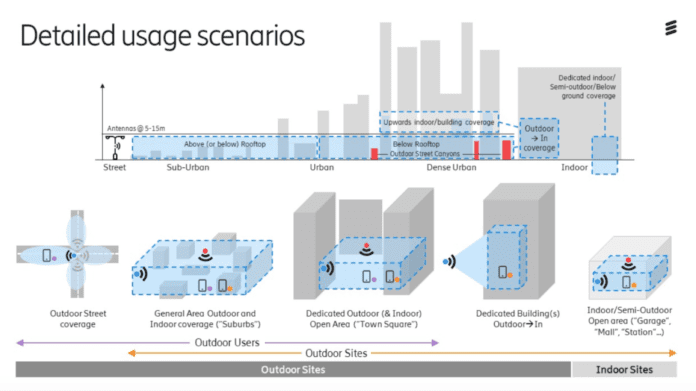Given the pervasive challenges associated with network densification, particularly backhaul and site acquisition, and the emergence of 5G at millimeter wave frequencies, what can operators do to deliver the service their customers expect?
Ericsson’s Martin Ljunberg, strategic product manager, small cell solutions, said this new breed of networks requires street-level deployments with inter-site distance of a couple hundred meters. On the backhaul side, he identified the use of both dark and lit fiber as well as the role of microwave. He also noted a potentially “promising future” associated with using millimeter wave frequencies for wireless backhaul, which is set for standardization with 3GPP’s upcoming Release 16. He called site acquisition “a very important aspect of this. A key thing is, of course, to make equipment that is small in size and good looking.”
Ljunberg also discussed centralization of radio access network equipment which, while not new for 5G, could prove increasingly beneficial given the need for density and optimizing the use of network and spectral resources. At a high-level, a C-RAN architecture is marked by pooling baseband resources and using fronthaul to connect remote radio units. This decreases equipment footprint and gives operators the ability to dynamically coordinate multiple radio sites and be more responsive to shifts in capacity demand.
C-RAN “brings some advantages in coordination capabilities,” he said. “I think some operators see more importance in the coordination and see potential of simplified handling. Other operators see that putting distributed radios in a more D-RAN-type of network, which I must say is the most common way of building networks today.”
But will 5G prove a boon for C-RAN? “We certainly see quite a lot of C-RAN deployments and doing C-RAN deployments offers the possibility to do some coordination features around the network, everything from carrier aggregation to combined cell and improving the performance of the network. We see many customers moving toward C-RAN and we believe also that high-band, low-band and mid-band 5G NR carrier aggregation will drive need for that. Particularly when we look at the 5G on millimeter wave, we see those radios are delivering a lot of capacity over a lot of radio spectrum and even if you do dark fiber, we are starting to see fronthaul capacity limitations. We believe an integrated street macro with the baseband processing…in the unit on site makes a lot of sense doing millimeter wave.”
In terms of solving for urban canyons in millimeter wave deployments, Ljunberg pointed out that propagation characteristics don’t lend themselves to turning corners, meaning, “There has to be a denser deployment so you have more line-of-sight and you have to realize, even with perfect planning, there will not be perfect millimeter wave coverage.”
To the idea of co-siting LTE and millimeter wave radios, and as evidenced by what carriers are finding in the field, “For introducing 5G, use existing sites. But millimeter wave coverage cannot be as good as with existing LTE bands at the street side. There will be a need to add millimeter wave-only sites,” Ljunberg said.

